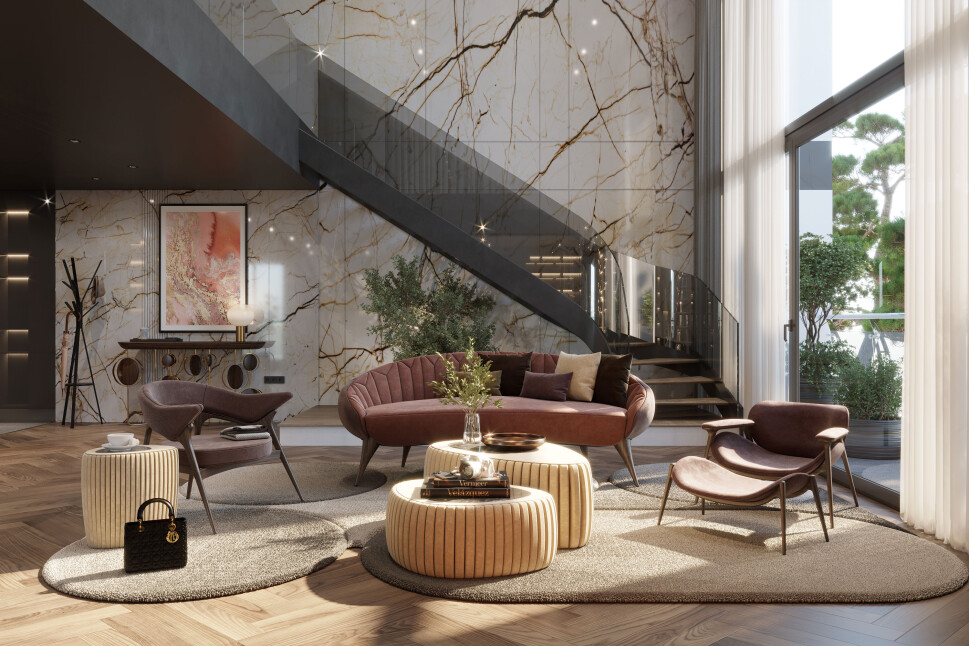
In an era of increasing environmental awareness, sustainable interior design offers a way to create beautiful and functional living spaces while 居屋設計 minimizing ecological impact. Embracing eco-friendly decor not only benefits the planet but also promotes healthier living environments. This guide explores practical tips for incorporating sustainable design elements into your home, ensuring that your decor choices contribute to a greener future without sacrificing style or comfort.
1. Choose Eco-Friendly Materials
Selecting sustainable materials is a cornerstone of eco-friendly interior design. Opt for products made from renewable resources, such as bamboo, reclaimed wood, or recycled metals and glass. These materials reduce the demand for virgin resources and minimize waste. Additionally, look for low-VOC (volatile organic compound) paints and finishes, which are less harmful to indoor air quality. Sustainable textiles, like organic cotton, hemp, or recycled fabrics, also contribute to a healthier home environment. By prioritizing these materials, you can ensure that your design choices align with environmental values while enhancing the aesthetic appeal of your space.
2. Incorporate Energy-Efficient Lighting
Lighting is a crucial element in sustainable interior design, and choosing energy-efficient options can significantly reduce your home’s carbon footprint. LED bulbs and fixtures use less energy and have a longer lifespan compared to traditional incandescent bulbs, leading to lower energy consumption and reduced waste. Incorporate natural light wherever possible by using sheer curtains or blinds that allow daylight to filter through. Installing dimmer switches and motion sensors can also help control energy use and adjust lighting levels based on needs. These small changes can lead to substantial energy savings and contribute to a more sustainable home.
3. Embrace Upcycling and Repurposing
Upcycling and repurposing existing items is a sustainable approach to decorating that reduces waste and saves money. Instead of discarding old furniture or decor, consider how you can refresh or transform these pieces. For example, an old dresser can be sanded and repainted to serve as a new storage solution, or vintage frames can be given new life with fresh artwork or mirrors. DIY projects that involve repurposing materials not only extend the life of your possessions but also add a unique, personalized touch to your interior design. This approach supports the principles of sustainability by reducing the need for new resources and minimizing landfill waste.
4. Invest in Quality over Quantity
When it comes to sustainable interior design, investing in high-quality, timeless pieces is often more eco-friendly than frequently purchasing inexpensive, disposable items. Quality furnishings and decor items tend to have a longer lifespan, reducing the need for replacements and minimizing waste. Look for well-crafted furniture made from durable materials, and choose classic designs that will remain stylish for years to come. By focusing on fewer, more meaningful pieces, you create a space that is not only sustainable but also enduringly beautiful.
5. Incorporate Plants and Greenery
Plants and greenery are not only visually appealing but also contribute to a healthier indoor environment. They improve air quality by absorbing pollutants and releasing oxygen, creating a fresher and more pleasant living space. Choose low-maintenance plants, such as succulents, snake plants, or pothos, that thrive in various light conditions and require minimal care. Incorporating plants into your decor adds a natural element to your home and reinforces the principles of sustainability. Use recycled or biodegradable pots and planters to further align with eco-friendly practices.
6. Support Local and Sustainable Brands
Supporting local and sustainable brands is a key strategy for promoting eco-friendly interior design. Look for companies that prioritize ethical production practices, use sustainable materials, and offer products with minimal environmental impact. Purchasing from local artisans or businesses reduces transportation emissions and supports the local economy. Many sustainable brands also focus on fair labor practices and social responsibility, ensuring that your design choices contribute positively to both the environment and communities. By making conscious purchasing decisions, you play a role in fostering a more sustainable and equitable design industry.
Adopting sustainable interior design practices allows you to create a home that reflects your commitment to environmental stewardship while enjoying a stylish and comfortable living space. By choosing eco-friendly materials, incorporating energy-efficient lighting, embracing upcycling, investing in quality pieces, adding greenery, and supporting sustainable brands, you can make a meaningful impact on the planet. These thoughtful choices not only enhance your home’s aesthetic appeal but also contribute to a healthier, more sustainable future.